En esta entrega exploraremos cómo construir una cámara de seguridad personalizada (que se comporte como yo quiero) usando un Raspberry PI zero (puede ser un Raspberry PI 3 también) y el paquete de código abierto motion.
Además haremos que luzca como una cámara profesional usando alguna de las opciones de cámara de Seguridad falsa que hay en el mercado.
Contenido
Materiales ($73)
- 1x Kit de Raspberry PI zero W con chasis, adaptadores, cables, fuente de poder y tarjeta SD de 16GB ($33)
- Nótest que el W al final es de «WiFi»
- 1x Cámara para Raspberry PI V2 @ 8MP ($27)
- 1x Cámara de seguridad falsa (solo el chasis) ($13)
Requerimientos de Software
- Sistema Operativo Raspbian Stretch Lite ( aprender más)
- Paquete de cámara Motion ( aprender más )
- VNC Server ( aprender más )
Pasos Resumidos
- Configurar el Sistema Operativo ( instructions )
- Instalar y Configurar VNC ( instructions )
- Instalar y Configurar Motion ( instructions )
Recordemos que para que motion se active durante el inicio debemos modificar el archivo /etc/rc.local para agregar una llamadamotion /home/pi/.motion/motion.config(o la ruta correcta al archivo de configuración de motion.config que se desea utilizar)
(!) Nótese que motion se puede configurar para que tome fotos durante un evento de movimiento a razón de n fotos por segundo; a su vez se puede configurar para que genere archivos AVI para cada evento de movimiento y que genere un time-lapse AVI también para cada minuto del día. - Archivo motion.conf de referencia
# Rename this distribution example file to motion.conf # # This config file was generated by motion 4.0 ############################################################ # Daemon ############################################################ # Start in daemon (background) mode and release terminal (default: off) daemon on # File to store the process ID, also called pid file. (default: not defined) process_id_file /var/run/motion/motion.pid ############################################################ # Basic Setup Mode ############################################################ # Start in Setup-Mode, daemon disabled. (default: off) setup_mode off # Use a file to save logs messages, if not defined stderr and syslog is used. (default: not defined) logfile /tmp/motion.log # Level of log messages [1..9] (EMG, ALR, CRT, ERR, WRN, NTC, INF, DBG, ALL). (default: 6 / NTC) log_level 6 # Filter to log messages by type (COR, STR, ENC, NET, DBL, EVT, TRK, VID, ALL). (default: ALL) log_type all ########################################################### # Capture device options ############################################################ # Videodevice to be used for capturing (default /dev/video0) # for FreeBSD default is /dev/bktr0 videodevice /dev/video0 # v4l2_palette allows one to choose preferable palette to be use by motion # to capture from those supported by your videodevice. (default: 17) # E.g. if your videodevice supports both V4L2_PIX_FMT_SBGGR8 and # V4L2_PIX_FMT_MJPEG then motion will by default use V4L2_PIX_FMT_MJPEG. # Setting v4l2_palette to 2 forces motion to use V4L2_PIX_FMT_SBGGR8 # instead. # # Values : # V4L2_PIX_FMT_SN9C10X : 0 'S910' # V4L2_PIX_FMT_SBGGR16 : 1 'BYR2' # V4L2_PIX_FMT_SBGGR8 : 2 'BA81' # V4L2_PIX_FMT_SPCA561 : 3 'S561' # V4L2_PIX_FMT_SGBRG8 : 4 'GBRG' # V4L2_PIX_FMT_SGRBG8 : 5 'GRBG' # V4L2_PIX_FMT_PAC207 : 6 'P207' # V4L2_PIX_FMT_PJPG : 7 'PJPG' # V4L2_PIX_FMT_MJPEG : 8 'MJPEG' # V4L2_PIX_FMT_JPEG : 9 'JPEG' # V4L2_PIX_FMT_RGB24 : 10 'RGB3' # V4L2_PIX_FMT_SPCA501 : 11 'S501' # V4L2_PIX_FMT_SPCA505 : 12 'S505' # V4L2_PIX_FMT_SPCA508 : 13 'S508' # V4L2_PIX_FMT_UYVY : 14 'UYVY' # V4L2_PIX_FMT_YUYV : 15 'YUYV' # V4L2_PIX_FMT_YUV422P : 16 '422P' # V4L2_PIX_FMT_YUV420 : 17 'YU12' # v4l2_palette 17 # Tuner device to be used for capturing using tuner as source (default /dev/tuner0) # This is ONLY used for FreeBSD. Leave it commented out for Linux ; tunerdevice /dev/tuner0 # The video input to be used (default: -1) # Should normally be set to 0 or 1 for video/TV cards, and -1 for USB cameras # Set to 0 for uvideo(4) on OpenBSD input -1 # The video norm to use (only for video capture and TV tuner cards) # Values: 0 (PAL), 1 (NTSC), 2 (SECAM), 3 (PAL NC no colour). Default: 0 (PAL) norm 0 2 # The frequency to set the tuner to (kHz) (only for TV tuner cards) (default: 0) frequency 0 # Override the power line frequency for the webcam. (normally not necessary) # Values: # -1 : Do not modify device setting # 0 : Power line frequency Disabled # 1 : 50hz # 2 : 60hz # 3 : Auto power_line_frequency -1 # Rotate image this number of degrees. The rotation affects all saved images as # well as movies. Valid values: 0 (default = no rotation), 90, 180 and 270. rotate 0 # Image width (pixels). Valid range: Camera dependent, default: 352 width 640 # Image height (pixels). Valid range: Camera dependent, default: 288 height 480 # Maximum number of frames to be captured per second. # Valid range: 2-100. Default: 100 (almost no limit). framerate 3 # Minimum time in seconds between capturing picture frames from the camera. # Default: 0 = disabled - the capture rate is given by the camera framerate. # This option is used when you want to capture images at a rate lower than 2 per second. minimum_frame_time 0 # URL to use if you are using a network camera, size will be autodetected (incl http:// ftp:// mjpg:// rtsp:// mjpeg:// or file:///) # Must be a URL that returns single jpeg pictures or a raw mjpeg stream. A trailing slash may be required for some cameras. # Default: Not defined ; netcam_url value # Username and password for network camera (only if required). Default: not defined # Syntax is user:password ; netcam_userpass value # The setting for keep-alive of network socket, should improve performance on compatible net cameras. # off: The historical implementation using HTTP/1.0, closing the socket after each http request. # force: Use HTTP/1.0 requests with keep alive header to reuse the same connection. # on: Use HTTP/1.1 requests that support keep alive as default. # Default: off netcam_keepalive off # URL to use for a netcam proxy server, if required, e.g. "http://myproxy". # If a port number other than 80 is needed, use "http://myproxy:1234". # Default: not defined ; netcam_proxy value # Set less strict jpeg checks for network cameras with a poor/buggy firmware. # Default: off netcam_tolerant_check off # RTSP connection uses TCP to communicate to the camera. Can prevent image corruption. # Default: on rtsp_uses_tcp on # Name of camera to use if you are using a camera accessed through OpenMax/MMAL # Default: Not defined ; mmalcam_name vc.ril.camera # Camera control parameters (see raspivid/raspistill tool documentation) # Default: Not defined ; mmalcam_control_params -hf # Let motion regulate the brightness of a video device (default: off). # The auto_brightness feature uses the brightness option as its target value. # If brightness is zero auto_brightness will adjust to average brightness value 128. # Only recommended for cameras without auto brightness auto_brightness off # Set the initial brightness of a video device. # If auto_brightness is enabled, this value defines the average brightness level # which Motion will try and adjust to. # Valid range 0-255, default 0 = disabled brightness 0 # Set the contrast of a video device. # Valid range 0-255, default 0 = disabled contrast 0 # Set the saturation of a video device. # Valid range 0-255, default 0 = disabled saturation 0 # Set the hue of a video device (NTSC feature). # Valid range 0-255, default 0 = disabled hue 0 ############################################################ # Round Robin (multiple inputs on same video device name) ############################################################ # Number of frames to capture in each roundrobin step (default: 1) roundrobin_frames 1 # Number of frames to skip before each roundrobin step (default: 1) roundrobin_skip 1 # Try to filter out noise generated by roundrobin (default: off) switchfilter off ############################################################ # Motion Detection Settings: ############################################################ # Threshold for number of changed pixels in an image that # triggers motion detection (default: 1500) threshold 1500 # Automatically tune the threshold down if possible (default: off) threshold_tune on # Noise threshold for the motion detection (default: 32) noise_level 32 # Automatically tune the noise threshold (default: on) noise_tune on # Despeckle motion image using (e)rode or (d)ilate or (l)abel (Default: not defined) # Recommended value is EedDl. Any combination (and number of) of E, e, d, and D is valid. # (l)abeling must only be used once and the 'l' must be the last letter. # Comment out to disable despeckle_filter EedDl # Detect motion in predefined areas (1 - 9). Areas are numbered like that: 1 2 3 # A script (on_area_detected) is started immediately when motion is 4 5 6 # detected in one of the given areas, but only once during an event. 7 8 9 # One or more areas can be specified with this option. Take care: This option # does NOT restrict detection to these areas! (Default: not defined) ; area_detect value # PGM file to use as a sensitivity mask. # Full path name to. (Default: not defined) ; mask_file value # Dynamically create a mask file during operation (default: 0) # Adjust speed of mask changes from 0 (off) to 10 (fast) smart_mask_speed 0 # Ignore sudden massive light intensity changes given as a percentage of the picture # area that changed intensity. Valid range: 0 - 100 , default: 0 = disabled lightswitch 0 # Picture frames must contain motion at least the specified number of frames # in a row before they are detected as true motion. At the default of 1, all # motion is detected. Valid range: 1 to thousands, recommended 1-5 minimum_motion_frames 1 # Specifies the number of pre-captured (buffered) pictures from before motion # was detected that will be output at motion detection. # Recommended range: 0 to 5 (default: 0) # Do not use large values! Large values will cause Motion to skip video frames and # cause unsmooth movies. To smooth movies use larger values of post_capture instead. pre_capture 1 # Number of frames to capture after motion is no longer detected (default: 0) post_capture 1 # Event Gap is the seconds of no motion detection that triggers the end of an event. # An event is defined as a series of motion images taken within a short timeframe. # Recommended value is 60 seconds (Default). The value -1 is allowed and disables # events causing all Motion to be written to one single movie file and no pre_capture. # If set to 0, motion is running in gapless mode. Movies don't have gaps anymore. An # event ends right after no more motion is detected and post_capture is over. event_gap 60 # Maximum length in seconds of a movie # When value is exceeded a new movie file is created. (Default: 0 = infinite) max_movie_time 0 # Always save images even if there was no motion (default: off) emulate_motion off ############################################################ # Image File Output ############################################################ # Output 'normal' pictures when motion is detected (default: on) # Valid values: on, off, first, best, center # When set to 'first', only the first picture of an event is saved. # Picture with most motion of an event is saved when set to 'best'. # Picture with motion nearest center of picture is saved when set to 'center'. # Can be used as preview shot for the corresponding movie. output_pictures on # Output pictures with only the pixels moving object (ghost images) (default: off) output_debug_pictures off # The quality (in percent) to be used by the jpeg compression (default: 75) quality 75 # Type of output images # Valid values: jpeg, ppm (default: jpeg) picture_type jpeg ############################################################ # FFMPEG related options # Film (movies) file output, and deinterlacing of the video input # The options movie_filename and timelapse_filename are also used # by the ffmpeg feature ############################################################ # Use ffmpeg to encode movies in realtime (default: off) ffmpeg_output_movies on # Use ffmpeg to make movies with only the pixels moving # object (ghost images) (default: off) ffmpeg_output_debug_movies off # Use ffmpeg to encode a timelapse movie # Default value 0 = off - else save frame every Nth second ffmpeg_timelapse 60 # The file rollover mode of the timelapse video # Valid values: hourly, daily (default), weekly-sunday, weekly-monday, monthly, manual ffmpeg_timelapse_mode daily # Bitrate to be used by the ffmpeg encoder (default: 400000) # This option is ignored if ffmpeg_variable_bitrate is not 0 (disabled) ffmpeg_bps 400000 # Enables and defines variable bitrate for the ffmpeg encoder. # ffmpeg_bps is ignored if variable bitrate is enabled. # Valid values: 0 (default) = fixed bitrate defined by ffmpeg_bps, # or the range 1 - 100 where 1 means worst quality and 100 is best. ffmpeg_variable_bitrate 0 # Codec to used by ffmpeg for the video compression. # Timelapse videos have two options. # mpg - Creates mpg file with mpeg-2 encoding. # If motion is shutdown and restarted, new pics will be appended # to any previously created file with name indicated for timelapse. # mpeg4 - Creates avi file with the default encoding. # If motion is shutdown and restarted, new pics will create a # new file with the name indicated for timelapse. # Supported formats are: # mpeg4 or msmpeg4 - gives you files with extension .avi # msmpeg4 is recommended for use with Windows Media Player because # it requires no installation of codec on the Windows client. # swf - gives you a flash film with extension .swf # flv - gives you a flash video with extension .flv # ffv1 - FF video codec 1 for Lossless Encoding # mov - QuickTime # mp4 - MPEG-4 Part 14 H264 encoding # mkv - Matroska H264 encoding # hevc - H.265 / HEVC (High Efficiency Video Coding) ffmpeg_video_codec mpeg4 # When creating videos, should frames be duplicated in order # to keep up with the requested frames per second # (default: true) ffmpeg_duplicate_frames true ############################################################ # SDL Window ############################################################ # Number of motion thread to show in SDL Window (default: 0 = disabled) #sdl_threadnr 0 ############################################################ # External pipe to video encoder # Replacement for FFMPEG builtin encoder for ffmpeg_output_movies only. # The options movie_filename and timelapse_filename are also used # by the ffmpeg feature ############################################################# # Bool to enable or disable extpipe (default: off) use_extpipe off # External program (full path and opts) to pipe raw video to # Generally, use '-' for STDIN... ;extpipe mencoder -demuxer rawvideo -rawvideo w=%w:h=%h:i420 -ovc x264 -x264encopts bframes=4:frameref=1:subq=1:scenecut=-1:nob_adapt:threads=1:keyint=1000:8x8dct:vbv_bufsize=4000:crf=24:partitions=i8x8,i4x4:vbv_maxrate=800:no-chroma-me -vf denoise3d=16:12:48:4,pp=lb -of avi -o %f.avi - -fps %fps ;extpipe x264 - --input-res %wx%h --fps %fps --bitrate 2000 --preset ultrafast --quiet -o %f.mp4 ;extpipe mencoder -demuxer rawvideo -rawvideo w=%w:h=%h:fps=%fps -ovc x264 -x264encopts preset=ultrafast -of lavf -o %f.mp4 - -fps %fps ;extpipe ffmpeg -y -f rawvideo -pix_fmt yuv420p -video_size %wx%h -framerate %fps -i pipe:0 -vcodec libx264 -preset ultrafast -f mp4 %f.mp4 ############################################################ # Snapshots (Traditional Periodic Webcam File Output) ############################################################ # Make automated snapshot every N seconds (default: 0 = disabled) snapshot_interval 0 ############################################################ # Text Display # %Y = year, %m = month, %d = date, # %H = hour, %M = minute, %S = second, %T = HH:MM:SS, # %v = event, %q = frame number, %t = camera id number, # %D = changed pixels, %N = noise level, \n = new line, # %i and %J = width and height of motion area, # %K and %L = X and Y coordinates of motion center # %C = value defined by text_event - do not use with text_event! # You can put quotation marks around the text to allow # leading spaces ############################################################ # Locate and draw a box around the moving object. # Valid values: on, off, preview (default: off) # Set to 'preview' will only draw a box in preview_shot pictures. locate_motion_mode off # Set the look and style of the locate box if enabled. # Valid values: box, redbox, cross, redcross (default: box) # Set to 'box' will draw the traditional box. # Set to 'redbox' will draw a red box. # Set to 'cross' will draw a little cross to mark center. # Set to 'redcross' will draw a little red cross to mark center. locate_motion_style box # Draws the timestamp using same options as C function strftime(3) # Default: %Y-%m-%d\n%T = date in ISO format and time in 24 hour clock # Text is placed in lower right corner text_right %Y-%m-%d\n%T-%q # Draw a user defined text on the images using same options as C function strftime(3) # Default: Not defined = no text # Text is placed in lower left corner ; text_left CAMERA %t # Draw the number of changed pixed on the images (default: off) # Will normally be set to off except when you setup and adjust the motion settings # Text is placed in upper right corner text_changes off # This option defines the value of the special event conversion specifier %C # You can use any conversion specifier in this option except %C. Date and time # values are from the timestamp of the first image in the current event. # Default: %Y%m%d%H%M%S # The idea is that %C can be used filenames and text_left/right for creating # a unique identifier for each event. text_event %Y%m%d%H%M%S # Draw characters at twice normal size on images. (default: off) text_double off # Text to include in a JPEG EXIF comment # May be any text, including conversion specifiers. # The EXIF timestamp is included independent of this text. ;exif_text %i%J/%K%L ############################################################ # Target Directories and filenames For Images And Films # For the options snapshot_, picture_, movie_ and timelapse_filename # you can use conversion specifiers # %Y = year, %m = month, %d = date, # %H = hour, %M = minute, %S = second, # %v = event, %q = frame number, %t = camera id number, # %D = changed pixels, %N = noise level, # %i and %J = width and height of motion area, # %K and %L = X and Y coordinates of motion center # %C = value defined by text_event # Quotation marks round string are allowed. ############################################################ # Target base directory for pictures and films # Recommended to use absolute path. (Default: current working directory) target_dir /var/lib/motion # File path for snapshots (jpeg or ppm) relative to target_dir # Default: %v-%Y%m%d%H%M%S-snapshot # Default value is equivalent to legacy oldlayout option # For Motion 3.0 compatible mode choose: %Y/%m/%d/%H/%M/%S-snapshot # File extension .jpg or .ppm is automatically added so do not include this. # Note: A symbolic link called lastsnap.jpg created in the target_dir will always # point to the latest snapshot, unless snapshot_filename is exactly 'lastsnap' snapshot_filename %v-%H%M%S-snapshot # File path for motion triggered images (jpeg or ppm) relative to target_dir # Default: %v-%Y%m%d%H%M%S-%q # Default value is equivalent to legacy oldlayout option # For Motion 3.0 compatible mode choose: %Y/%m/%d/%H/%M/%S-%q # File extension .jpg or .ppm is automatically added so do not include this # Set to 'preview' together with best-preview feature enables special naming # convention for preview shots. See motion guide for details picture_filename %Y%m%d/%v-%H%M%S-%q # File path for motion triggered ffmpeg films (movies) relative to target_dir # Default: %v-%Y%m%d%H%M%S # File extensions(.mpg .avi) are automatically added so do not include them movie_filename %Y%m%d/%v-%H%M%S-motion # File path for timelapse movies relative to target_dir # Default: %Y%m%d-timelapse # File extensions(.mpg .avi) are automatically added so do not include them timelapse_filename %Y%m%d/timelapse ############################################################ # Global Network Options ############################################################ # Enable IPv6 (default: off) ipv6_enabled off ############################################################ # Live Stream Server ############################################################ # The mini-http server listens to this port for requests (default: 0 = disabled) stream_port 8080 # Quality of the jpeg (in percent) images produced (default: 50) stream_quality 50 # Output frames at 1 fps when no motion is detected and increase to the # rate given by stream_maxrate when motion is detected (default: off) stream_motion off # Maximum framerate for stream streams (default: 1) stream_maxrate 1 # Restrict stream connections to localhost only (default: on) stream_localhost off # Limits the number of images per connection (default: 0 = unlimited) # Number can be defined by multiplying actual stream rate by desired number of seconds # Actual stream rate is the smallest of the numbers framerate and stream_maxrate stream_limit 0 # Set the authentication method (default: 0) # 0 = disabled # 1 = Basic authentication # 2 = MD5 digest (the safer authentication) stream_auth_method 0 # Authentication for the stream. Syntax username:password # Default: not defined (Disabled) ; stream_authentication username:password # Percentage to scale the stream image for preview # Default: 25 ; stream_preview_scale 25 # Have stream preview image start on a new line # Default: no ; stream_preview_newline no ############################################################ # HTTP Based Control ############################################################ # TCP/IP port for the http server to listen on (default: 0 = disabled) webcontrol_port 8081 # Restrict control connections to localhost only (default: on) webcontrol_localhost on # Output for http server, select off to choose raw text plain (default: on) webcontrol_html_output on # Authentication for the http based control. Syntax username:password # Default: not defined (Disabled) ; webcontrol_authentication username:password ############################################################ # Tracking (Pan/Tilt) ############################################################# # Type of tracker (0=none (default), 1=stepper, 2=iomojo, 3=pwc, 4=generic, 5=uvcvideo, 6=servo) # The generic type enables the definition of motion center and motion size to # be used with the conversion specifiers for options like on_motion_detected track_type 0 # Enable auto tracking (default: off) track_auto off # Serial port of motor (default: none) ;track_port /dev/ttyS0 # Motor number for x-axis (default: 0) ;track_motorx 0 # Set motorx reverse (default: 0) ;track_motorx_reverse 0 # Motor number for y-axis (default: 0) ;track_motory 1 # Set motory reverse (default: 0) ;track_motory_reverse 0 # Maximum value on x-axis (default: 0) ;track_maxx 200 # Minimum value on x-axis (default: 0) ;track_minx 50 # Maximum value on y-axis (default: 0) ;track_maxy 200 # Minimum value on y-axis (default: 0) ;track_miny 50 # Center value on x-axis (default: 0) ;track_homex 128 # Center value on y-axis (default: 0) ;track_homey 128 # ID of an iomojo camera if used (default: 0) track_iomojo_id 0 # Angle in degrees the camera moves per step on the X-axis # with auto-track (default: 10) # Currently only used with pwc type cameras track_step_angle_x 10 # Angle in degrees the camera moves per step on the Y-axis # with auto-track (default: 10) # Currently only used with pwc type cameras track_step_angle_y 10 # Delay to wait for after tracking movement as number # of picture frames (default: 10) track_move_wait 10 # Speed to set the motor to (stepper motor option) (default: 255) track_speed 255 # Number of steps to make (stepper motor option) (default: 40) track_stepsize 40 ############################################################ # External Commands, Warnings and Logging: # You can use conversion specifiers for the on_xxxx commands # %Y = year, %m = month, %d = date, # %H = hour, %M = minute, %S = second, # %v = event, %q = frame number, %t = camera id number, # %D = changed pixels, %N = noise level, # %i and %J = width and height of motion area, # %K and %L = X and Y coordinates of motion center # %C = value defined by text_event # %f = filename with full path # %n = number indicating filetype # Both %f and %n are only defined for on_picture_save, # on_movie_start and on_movie_end # Quotation marks round string are allowed. ############################################################ # Do not sound beeps when detecting motion (default: on) # Note: Motion never beeps when running in daemon mode. quiet on # Command to be executed when an event starts. (default: none) # An event starts at first motion detected after a period of no motion defined by event_gap ; on_event_start value # Command to be executed when an event ends after a period of no motion # (default: none). The period of no motion is defined by option event_gap. ; on_event_end value # Command to be executed when a picture (.ppm|.jpg) is saved (default: none) # To give the filename as an argument to a command append it with %f ; on_picture_save value # Command to be executed when a motion frame is detected (default: none) ; on_motion_detected value # Command to be executed when motion in a predefined area is detected # Check option 'area_detect'. (default: none) ; on_area_detected value # Command to be executed when a movie file (.mpg|.avi) is created. (default: none) # To give the filename as an argument to a command append it with %f ; on_movie_start value # Command to be executed when a movie file (.mpg|.avi) is closed. (default: none) # To give the filename as an argument to a command append it with %f ; on_movie_end value # Command to be executed when a camera can't be opened or if it is lost # NOTE: There is situations when motion don't detect a lost camera! # It depends on the driver, some drivers dosn't detect a lost camera at all # Some hangs the motion thread. Some even hangs the PC! (default: none) ; on_camera_lost value ##################################################################### # Common Options for database features. # Options require database options to be active also. ##################################################################### # Log to the database when creating motion triggered picture file (default: on) ; sql_log_picture on # Log to the database when creating a snapshot image file (default: on) ; sql_log_snapshot on # Log to the database when creating motion triggered movie file (default: off) ; sql_log_movie off # Log to the database when creating timelapse movies file (default: off) ; sql_log_timelapse off # SQL query string that is sent to the database # Use same conversion specifiers has for text features # Additional special conversion specifiers are # %n = the number representing the file_type # %f = filename with full path # Default value: # Create tables : ## # Mysql # CREATE TABLE security (camera int, filename char(80) not null, frame int, file_type int, time_stamp timestamp(14), event_time_stamp timestamp(14)); # # Postgresql # CREATE TABLE security (camera int, filename char(80) not null, frame int, file_type int, time_stamp timestamp without time zone, event_time_stamp timestamp without time zone); # # insert into security(camera, filename, frame, file_type, time_stamp, text_event) values('%t', '%f', '%q', '%n', '%Y-%m-%d %T', '%C') ; sql_query insert into security(camera, filename, frame, file_type, time_stamp, event_time_stamp) values('%t', '%f', '%q', '%n', '%Y-%m-%d %T', '%C') ############################################################ # Database Options ############################################################ # database type : mysql, postgresql, sqlite3 (default : not defined) ; database_type value # database to log to (default: not defined) # for sqlite3, the full path and name for the database. ; database_dbname value # The host on which the database is located (default: localhost) ; database_host value # User account name for database (default: not defined) ; database_user value # User password for database (default: not defined) ; database_password value # Port on which the database is located # mysql 3306 , postgresql 5432 (default: not defined) ; database_port value # Database wait time in milliseconds for locked database to # be unlocked before returning database locked error (default 0) ; database_busy_timeout 0 ############################################################ # Video Loopback Device (vloopback project) ############################################################ # Output images to a video4linux loopback device # The value '-' means next available (default: not defined) ; video_pipe value # Output motion images to a video4linux loopback device # The value '-' means next available (default: not defined) ; motion_video_pipe value ############################################################## # camera config files - One for each camera. # Except if only one camera - You only need this config file. # If you have more than one camera you MUST define one camera # config file for each camera in addition to this config file. ############################################################## # Remember: If you have more than one camera you must have one # camera file for each camera. E.g. 2 cameras requires 3 files: # This motion.conf file AND camera1.conf and camera2.conf. # Only put the options that are unique to each camera in the # camera config files. ; camera /etc/motion/camera1.conf ; camera /etc/motion/camera2.conf ; camera /etc/motion/camera3.conf ; camera /etc/motion/camera4.conf ############################################################## # Camera config directory - One for each camera. ############################################################## # ; camera_dir /etc/motion/conf.d - Pruebas Iniciales
- Desarmar la cámara falsa e instalar componentes ( instructions example )
- Más pruebas
- Instalación Física
- Más Pruebas
- Siguientes Pasos: ¿y si subimos los eventos a Internet?
En próximas entregas estaremos detallando los pasos que yo he seguido (en español) y mostrando algunas ideas para los siguientes pasos.
ACTUALIZACIÓN: Algunos tips de Robin Gonzalez Ricz
Acá algunas fotos de ejemplo de cómo construimos la cámara así como algunos videos tomados por la cámara.
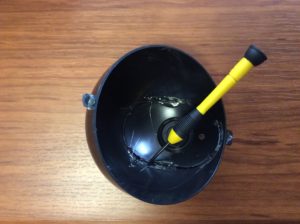
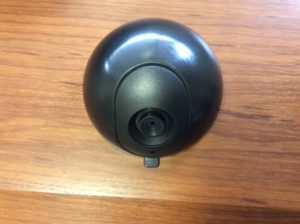
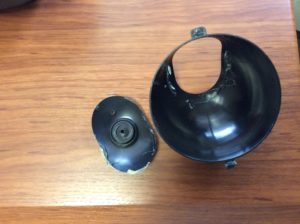
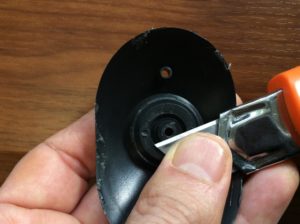
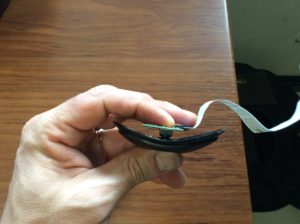
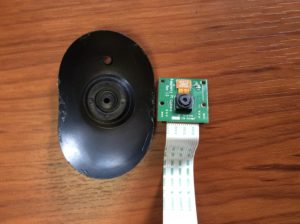

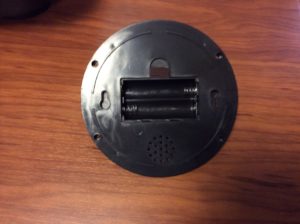


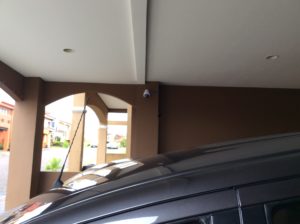
![]()
Comentarios